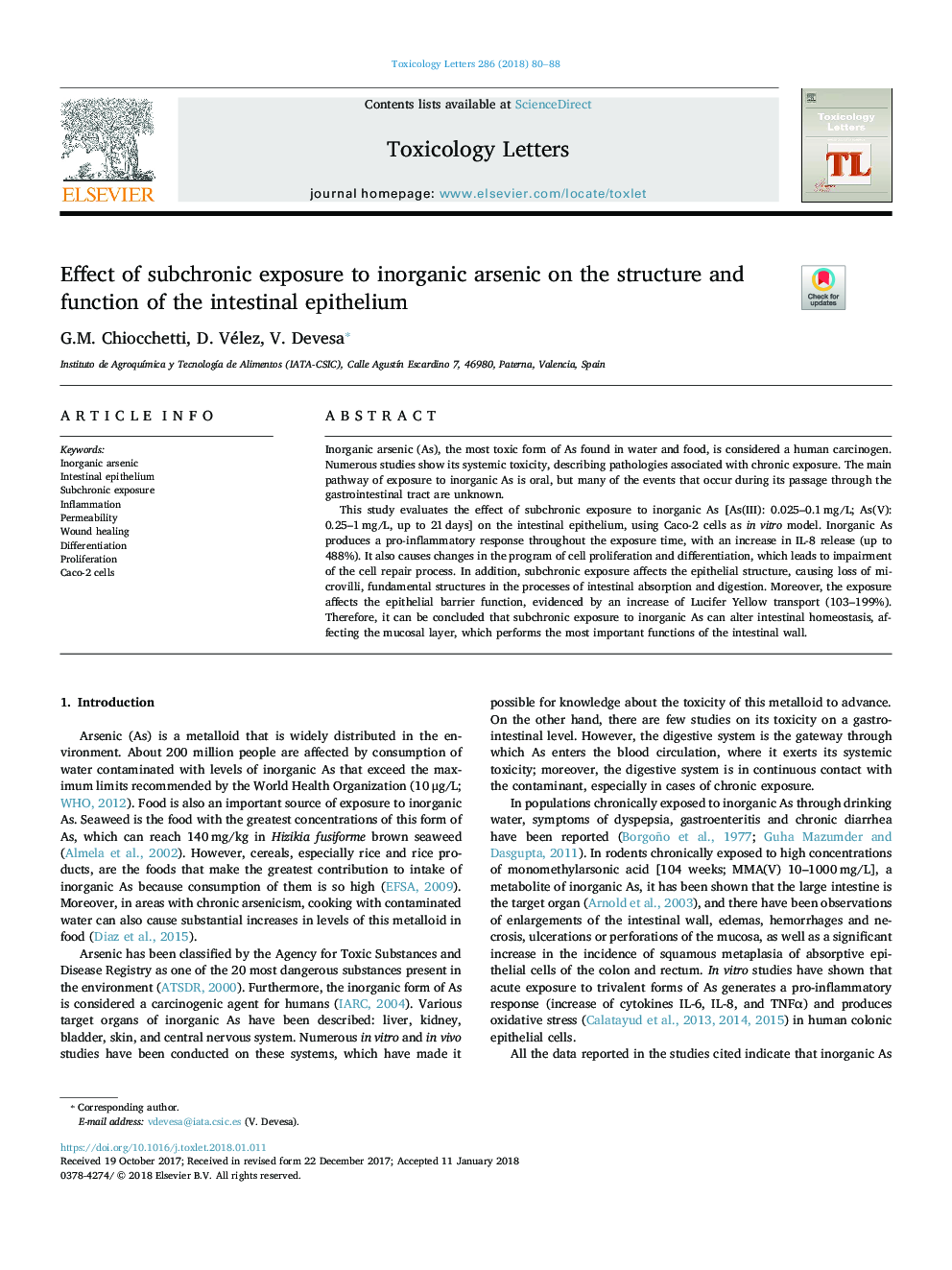| Article ID | Journal | Published Year | Pages | File Type |
|---|---|---|---|---|
| 8553408 | Toxicology Letters | 2018 | 9 Pages |
Abstract
This study evaluates the effect of subchronic exposure to inorganic As [As(III): 0.025-0.1â¯mg/L; As(V): 0.25-1â¯mg/L, up to 21â¯days] on the intestinal epithelium, using Caco-2 cells as in vitro model. Inorganic As produces a pro-inflammatory response throughout the exposure time, with an increase in IL-8 release (up to 488%). It also causes changes in the program of cell proliferation and differentiation, which leads to impairment of the cell repair process. In addition, subchronic exposure affects the epithelial structure, causing loss of microvilli, fundamental structures in the processes of intestinal absorption and digestion. Moreover, the exposure affects the epithelial barrier function, evidenced by an increase of Lucifer Yellow transport (103-199%). Therefore, it can be concluded that subchronic exposure to inorganic As can alter intestinal homeostasis, affecting the mucosal layer, which performs the most important functions of the intestinal wall.
Keywords
Related Topics
Life Sciences
Environmental Science
Health, Toxicology and Mutagenesis
Authors
G.M. Chiocchetti, D. Vélez, V. Devesa,
